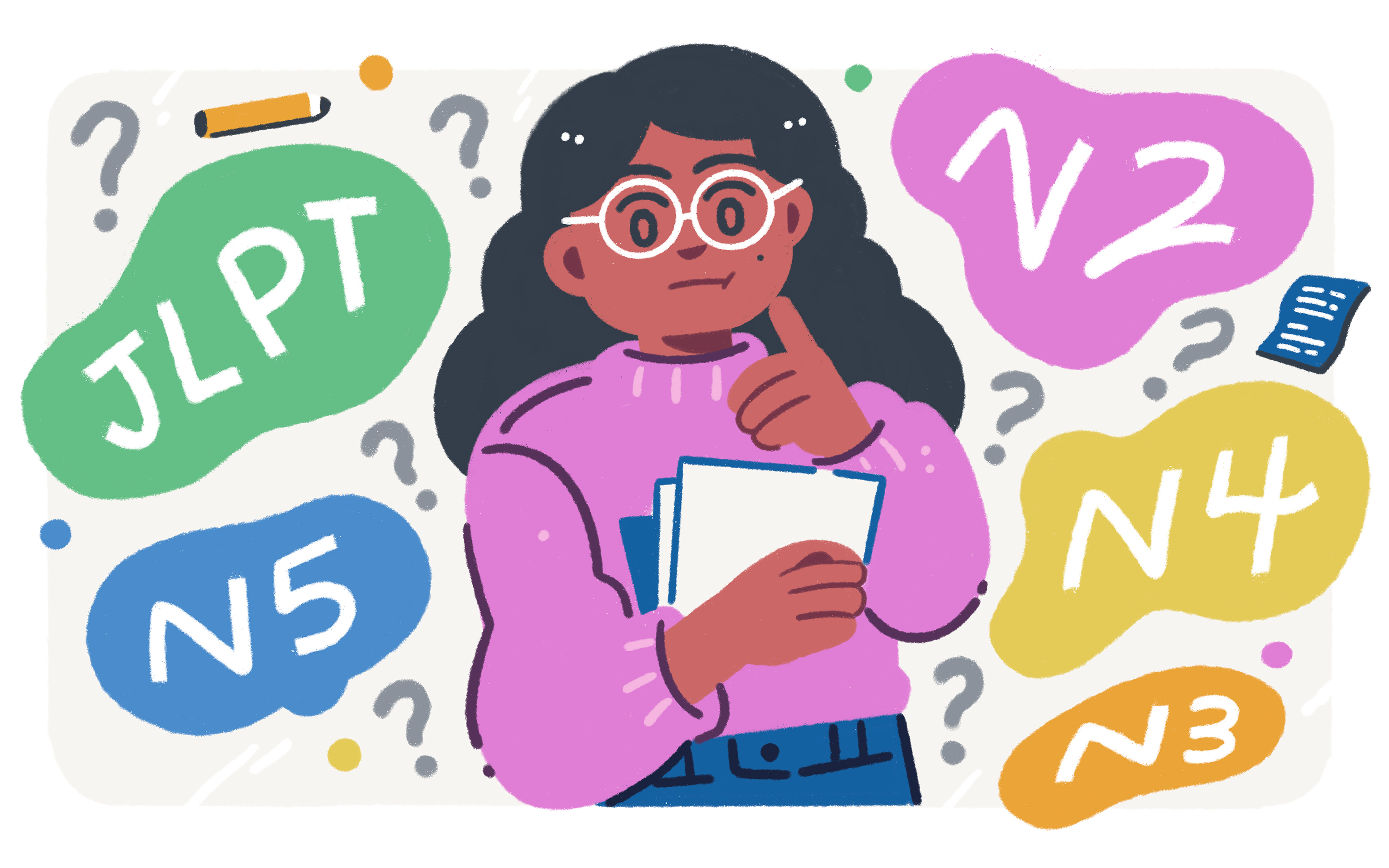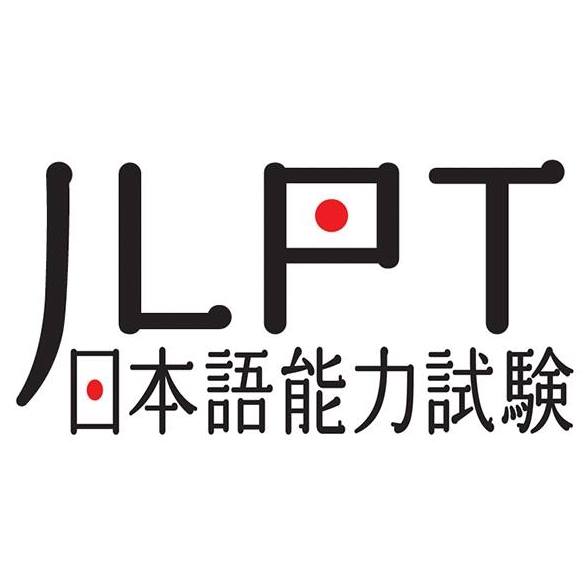Ready to conquer the JLPT but don’t know where to start? Don’t worry—Zennihongo is here to guide you every step of the way!
Whether you’re aiming for the beginner-friendly N5 or the mighty N1, Zennihongo will help you unlock your Japanese potential with study hacks, test tips, and custom support that actually works. 🚀
🧭 Understanding JLPT Levels – Set Goals That Make Sense
Before you start studying, you need to know which level of the JLPT is right for you—and Zennihongo can help with that too!
There are five levels in the JLPT, from N5 (easiest) to N1 (hardest), and each one tests different language skills. Let’s break them down:
| Level | Skills Tested | Ideal For |
|---|---|---|
| N5 | Basic kanji, hiragana, simple grammar | Absolute beginners |
| N4 | Everyday vocabulary and grammar | Lower beginners |
| N3 | Intermediate grammar, reading & listening | Upper beginners / Lower intermediate |
| N2 | Complex grammar, news, articles | Intermediate to advanced learners |
| N1 | Native-level fluency, academic content | Advanced learners and job seekers |
👉 Zennihongo recommends taking a quick placement quiz or chatting with our teachers to choose the level that suits your current ability.
The Japanese-Language Proficiency Test (JLPT) is a widely recognized assessment that evaluates Japanese language proficiency across five levels, from N5 (beginner) to N1 (advanced). Understanding these levels is essential for setting clear and realistic goals as you prepare for the exam. Each level has specific skill requirements and tests different aspects of the language, including grammar, vocabulary, kanji, reading comprehension, and listening.
The N5 level is ideal for beginners, testing basic kanji and hiragana knowledge, as well as simple grammar. This is perfect if you’re just starting your Japanese language journey. As you progress, the N4 level introduces more everyday vocabulary and grammar, moving you from a lower beginner to a more competent beginner. The N3 level serves as a bridge, incorporating intermediate grammar and listening comprehension, and is suitable for upper beginners or lower intermediate learners.
The N2 level is often seen as the threshold for most job-related qualifications. It covers complex grammar and can involve reading more advanced materials like news articles or essays. Finally, N1 is the highest level, aimed at learners who possess native-like fluency in Japanese. It tests deep comprehension of complex content, including academic topics, and requires a high command of all aspects of the language.
Before diving into your study plan, Zennihongo encourages you to assess your current level, either through a placement quiz or discussion with a teacher. This ensures you’re aiming for a level that matches your current skills, helping you avoid frustration and stay motivated throughout your preparation.

📚 Smart Study Techniques – Learn Smarter, Not Harder
Passing the JLPT isn’t just about how much time you study—it’s about how you study. Zennihongo offers structured methods that make learning fun, focused, and fast!
Here’s how Zennihongo helps you study each key section:
📖 Grammar + Vocabulary
- Use sentence cards with one grammar point per card
- Break large grammar lists into weekly goals
- Practice with Zennihongo quiz sheets & live classes
🈷️ Kanji
- Focus on high-frequency JLPT kanji first
- Use memory tricks and mnemonics shared in Zennihongo lessons
- Try kanji apps like Anki, which Zennihongo supports in its study plans
👂 Listening
- Listen to JLPT-style audio clips in Zennihongo’s course platform
- Mimic pronunciation using our guided shadowing exercises
- Watch anime or dramas with Japanese subtitles (yes, Zennihongo approves!)
📖 Reading
- Read short paragraphs from Zennihongo’s N5–N1 graded readers
- Highlight unknown words, look them up, and revise weekly
- Use JLPT sample tests available in the Zennihongo study portal
| Skill | Zennihongo Tools |
|---|---|
| Grammar | Custom worksheets, interactive lessons |
| Vocabulary | Flashcards, games, quizzes |
| Kanji | Mnemonic charts, kanji maps, printables |
| Listening | Audio tracks, native-speed conversations |
| Reading | Levelled reading passages, storybooks |
Successfully passing the JLPT isn’t just about how many hours you study, but how efficiently and effectively you use your time. Zennihongo focuses on smart study techniques that maximize your learning with structured, engaging methods. Whether you’re preparing for N5 or N1, Zennihongo’s approach emphasizes active learning strategies that break down the material into manageable chunks and encourage consistent progress.
When it comes to grammar and vocabulary, Zennihongo recommends using sentence cards with a single grammar point per card. This technique simplifies complex grammar rules into bite-sized pieces and helps with memorization. Breaking large lists into weekly goals keeps you from feeling overwhelmed, while interactive lessons, worksheets, and quizzes reinforce key concepts. Kanji is often seen as the most challenging aspect of the JLPT, but Zennihongo simplifies it with high-frequency kanji decks, mnemonic charts, and memory tricks that make kanji easier to recall. Spaced repetition, a method supported by Zennihongo’s integration with Anki, ensures that you retain kanji in the long term.
Listening practice involves listening to JLPT-style audio clips, mimicking pronunciation through shadowing exercises, and engaging with Japanese media such as anime or dramas. This not only improves listening comprehension but also helps with pronunciation and natural language usage. Lastly, reading practice includes graded passages that match your current level, enabling you to progressively challenge yourself while tracking unknown vocabulary in your study diary.
By combining these strategies, Zennihongo ensures that your study sessions are dynamic and targeted, helping you retain information more effectively and avoid burnout.

⏳ Time Management & Exam Strategies – Practice Like a Pro
The JLPT is not only about knowing Japanese—it’s also about managing time wisely during the test.
Zennihongo teaches time-tested strategies to help you stay cool and collected during the real thing.
🕒 Test Timing Tips from Zennihongo:
- Always do a few full mock tests using the Zennihongo JLPT simulator
- Read questions first, then skim the text (especially for reading section)
- Use the 2-pass method—answer easy ones first, mark the tough ones for review
- Budget time per section using this handy Zennihongo chart:
| JLPT Level | Total Time | Recommended Per Section |
|---|---|---|
| N5 | ~105 mins | Vocabulary (25) / Grammar+Reading (50) / Listening (30) |
| N3 | ~140 mins | Vocabulary (30) / Grammar+Reading (70) / Listening (40) |
| N1 | ~170 mins | Vocabulary (30) / Grammar+Reading (90) / Listening (50) |
📌 Zennihongo also provides timed mini-tests in each class so you’re always ready for the real thing!
One of the biggest challenges of the JLPT is managing time efficiently during the exam. Zennihongo recognizes that knowing the content is only part of the battle; developing smart exam strategies is crucial for performing well under pressure. To help you tackle the test confidently, Zennihongo offers practical timing tips and strategies that maximize your efficiency.
Zennihongo’s approach begins with mock tests. Regular practice exams help you familiarize yourself with the test format and get a feel for the timing. This not only reduces anxiety but also trains you to pace yourself during the actual exam. Zennihongo’s JLPT simulator gives you a realistic testing environment, allowing you to measure your progress and identify areas of improvement.
The 2-pass method is one of the most effective strategies Zennihongo advocates. During the exam, you should first answer the questions you find easiest. This ensures that you score as many points as possible before tackling the more difficult ones. For harder questions, mark them for review and return to them later with fresh eyes. This method prevents wasting too much time on a single challenging question and helps you maintain momentum throughout the exam.
Zennihongo also recommends allocating specific amounts of time per section, which is especially important for higher-level exams. For example, the N5 exam allows approximately 25 minutes for vocabulary, 50 minutes for grammar and reading, and 30 minutes for listening. At more advanced levels, like N1, the time allocation is longer, but the material is significantly more challenging. By sticking to a schedule, you can stay on track and complete each section within the allotted time.
🎯 How Zennihongo Can Help You Ace It
Whether you’re studying alone or need full coaching, Zennihongo offers the tools, tips, and teacher support to help you ace the JLPT.
Our platform is designed for real people with real schedules—no fluff, just smart learning.
🔧 What You Get with Zennihongo:
- Personalized study plans (tailored to your level and goals)
- Weekly progress tracking
- JLPT-focused mock exams
- Teacher Q&A + feedback support
- Exclusive JLPT strategy sessions
🎁 Bonus: When you join Zennihongo, you also get access to our JLPT Resource Vault—filled with past papers, vocabulary decks, cheat sheets, and more!
Zennihongo goes beyond simply providing study materials; it offers comprehensive, personalized support to ensure your JLPT success. Whether you’re preparing for a beginner-level test or aiming for the advanced N1, Zennihongo’s approach is tailored to your needs, making language learning both enjoyable and efficient.
Zennihongo’s personalized study plans are one of the platform’s key features. After assessing your current proficiency level, Zennihongo helps you design a roadmap that aligns with your goals and timeline. The plan includes weekly goals, structured lessons, and specific areas of focus, ensuring you stay on track and make continuous progress. You will also receive weekly feedback from Zennihongo’s experienced teachers, which helps refine your study approach and ensures you address any weak points.
For those who need extra motivation and support, Zennihongo offers group classes and private coaching options. These sessions are interactive and focused on the JLPT, providing opportunities to ask questions, review materials, and gain new insights. The mock exams offered by Zennihongo simulate the JLPT’s structure, and they come with detailed explanations to help you understand why your answers were correct or incorrect. This feedback loop reinforces your learning and builds confidence.
Zennihongo also provides several bonus resources, including vocabulary decks tailored to each JLPT level, grammar cheatsheets for quick reference, kanji printables for stroke order practice, and a library of video lessons. These resources are designed to fit into your daily schedule, whether you have 20 minutes or a few hours to spare. With Zennihongo’s combination of personalized learning, teacher support, and valuable resources, you’ll have everything you need to succeed.
🚀 Start Your JLPT Journey with Zennihongo
The JLPT doesn’t have to be scary. With the right tools and the support of Zennihongo, it can actually be fun and empowering!
So, what are you waiting for? Start your JLPT prep the smart way.
📞 Contact Zennihongo today, chat with our coaches, and don’t forget to check out other awesome blogs like:
Remember, with Zennihongo, you’re not just learning Japanese—you’re unlocking a whole new world. 🌏
